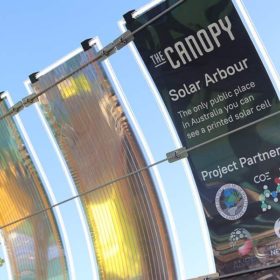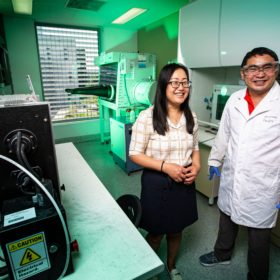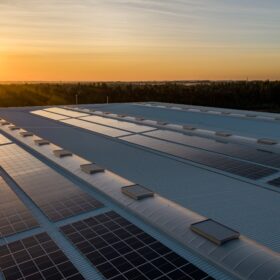Printed Solar catches the light in first public display, foreshadows new manufacturing industry
The University of Newcastle’s development of world-leading printed solar technology has taken a massive step toward rapid commercialisation with its first public display. Due to the technology’s panoramic applicability, this day may very well be looked back upon as the day the very world as we know it changed, and changed for the better.
Turning the Top End toward hydrogen production
The Northern Territory is an energy powerhouse, pulsing with oil and gas expertise, LNG processing plants and a burgeoning solar scene. The government’s new Renewable Hydrogen Strategy seeks to leverage such skill sets and infrastructure towards a green-hydrogen industry and net-zero emissions by 2050…
Throw another prawn on the battery
Scientists led by MIT have suggested chitin, a carbon and nitrogen-rich material made from waste shrimp shells, could produce sustainable electrodes for vanadium redox flow batteries and other energy storage technologies.
Deakin University set to steward new energy storage Research Hub
A New Safe and Reliable Energy Storage and Conversion Technologies Research Hub is one of five grant recipients of the Australian Research Council’s funding for Industrial Transformation. The Hub will seek to develop new technologies in energy storage to eliminate the risk of fire, as well as addressing the environmental impact of current technologies.
Australia’s metal gurus engineer two energy-storage breakthroughs
Energy storage is in high demand, to help manage a growing proportion of renewable energy in global electricity grids, to free off-grid communities from the tyranny of diesel, and to enable the aspirations of people not yet connected to a power supply. These two promising technologies have reached important milestones…
AZZO to take on America
Adelaide-based renewable and microgrid energy solutions firm AZZO is taking advantage of its strong Australian root system to expand into the U.S. market.
What’s going on in the world of thermal energy storage?
Can this technology be commercialized? A partnership between Siemens Energy and EnergyNest to develop thermal storage solutions together is the latest development in an industry with lots of potential, but little practical application thus far.
UNSW and Providence Asset Group form hydrogen research to market partnership
The University of New South Wales Sydney and Providence Asset Group are teaming up to form the Hydrogen Energy Research Centre, a university-to-industry institute toward the translation of hydrogen research into commercial production as Australia looks to become a world leader in hydrogen exports.
Hydrogen vehicles: Elvin Group to crack the chicken-and-egg scenario
Why did the chicken cross the road? It wanted to get to an electrolyser and close the loop on a persistent dilemma: what comes first — a critical mass of hydrogen-fuel-cell vehicles, or the infrastructure of hydrogen production and refuelling opportunities that will see those vehicles confidently hit the tar?
Aus Government to apply Consumer Data Right to the energy sector
In a bid to encourage competition, the Morrison Government has announced its formal application of the Consumer Data Right regime to the energy sector. It is a move supported by the Australian Energy Council and Energy Consumers Australia but how much power can the consumer expect in the Big Data revolution?















